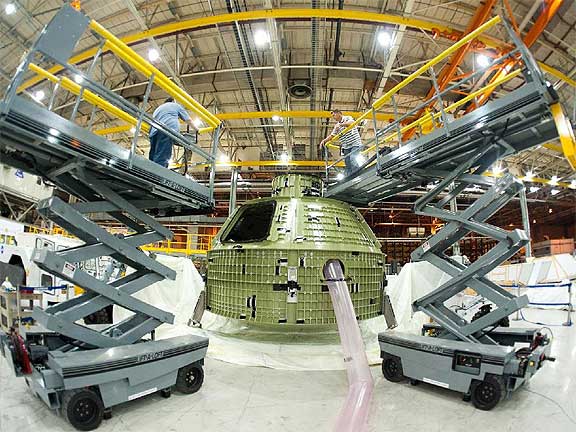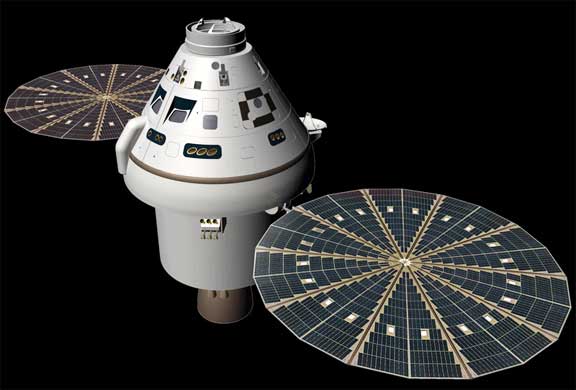...marking a major milestone in the construction of the vehicle that will carry astronauts farther into space than ever before. Orion will be the most advanced spacecraft ever designed and will provide emergency abort capability, sustain astronauts during space travel and provide safe re-entry from deep space.

At NASA’s Michoud Assembly Facility in Louisiana, the first space-bound Orion capsule is packed up for shipment to the Kennedy Space Center for final processing and outfitting. Photo courtesy of NASA.
The space-bound Orion will launch on Exploration Flight Test-1, an uncrewed mission planned for 2014. The spacecraft will travel 3,600 miles above the Earth's surface, 15 times farther than the International Space Station's orbital position. This is farther than any spacecraft designed to carry humans t has gone in more than 40 years. The primary flight objective is to understand Orion's heat shield performance at speeds generated during a return from deep space.
In advance of the 2014 launch from Cape Canaveral Air Force Station, Florida, a 400-person Orion production team at Kennedy will apply heat shielding thermal protection systems, avionics and other subsystems to the spacecraft. Work also is underway by the Ground Systems Development and Operations team at Kennedy to modify and refurbish facilities used throughout the history of American spaceflight in preparation for the next generation of rockets and spacecraft. This includes the Vehicle Assembly Building, Launch Control Center, launch pad, mobile launcher and crawler-transporter.

In 2017, Orion will be launched by NASA's Space Launch System (SLS), a heavy-lift rocket that will provide an entirely new capability for human exploration beyond low Earth orbit. Designed to be flexible for launching spacecraft for crew and cargo missions, SLS will enable new missions of exploration and expand human presence across the solar system.
Across the country, progress is being made on multiple components and capabilities for Orion and SLS. Orion has successfully completed numerous splashdown tests from a variety of angles and speeds, examining how the spacecraft will come to a rest on the ocean at the conclusion of deep space missions. NASA also has conducted a series of parachute tests high above the Arizona desert, demonstrating how Orion will behave under its giant parachute canopy. Software tests have been run between Mission Control Houston and an Orion mockup at Lockheed Martin's Exploration Development Laboratory, allowing flight controllers to learn how the spacecraft's onboard computers operate. Work also continues to build and fine-tune Orion's launch abort system. Lockheed Martin is the prime contractor for Orion.
The J-2X upper-stage rocket engine, developed by Pratt & Whitney Rocketdyne for the future two-stage SLS, is being tested at Stennis Space Center in Mississippi. The prime contractor for the five-segment solid rocket boosters, ATK, has begun processing its first SLS hardware components in preparation for an initial qualification test in 2013. The SLS core stage, which will be designed and manufactured by Boeing, has just passed a major technical review and is moving from concept to early design. Boeing has already delivered test bed flight computers to the program and flight software development is underway.
The Orion crew module was built at NASA's Michoud Assembly Facility in New Orleans. NASA's Johnson Space Center in Houston manages the Orion Program. SLS is managed by NASA's Marshall Space Flight Center in Huntsville, Alabama. NASA's Ground Systems Development and Operations Program is managed by Kennedy.

